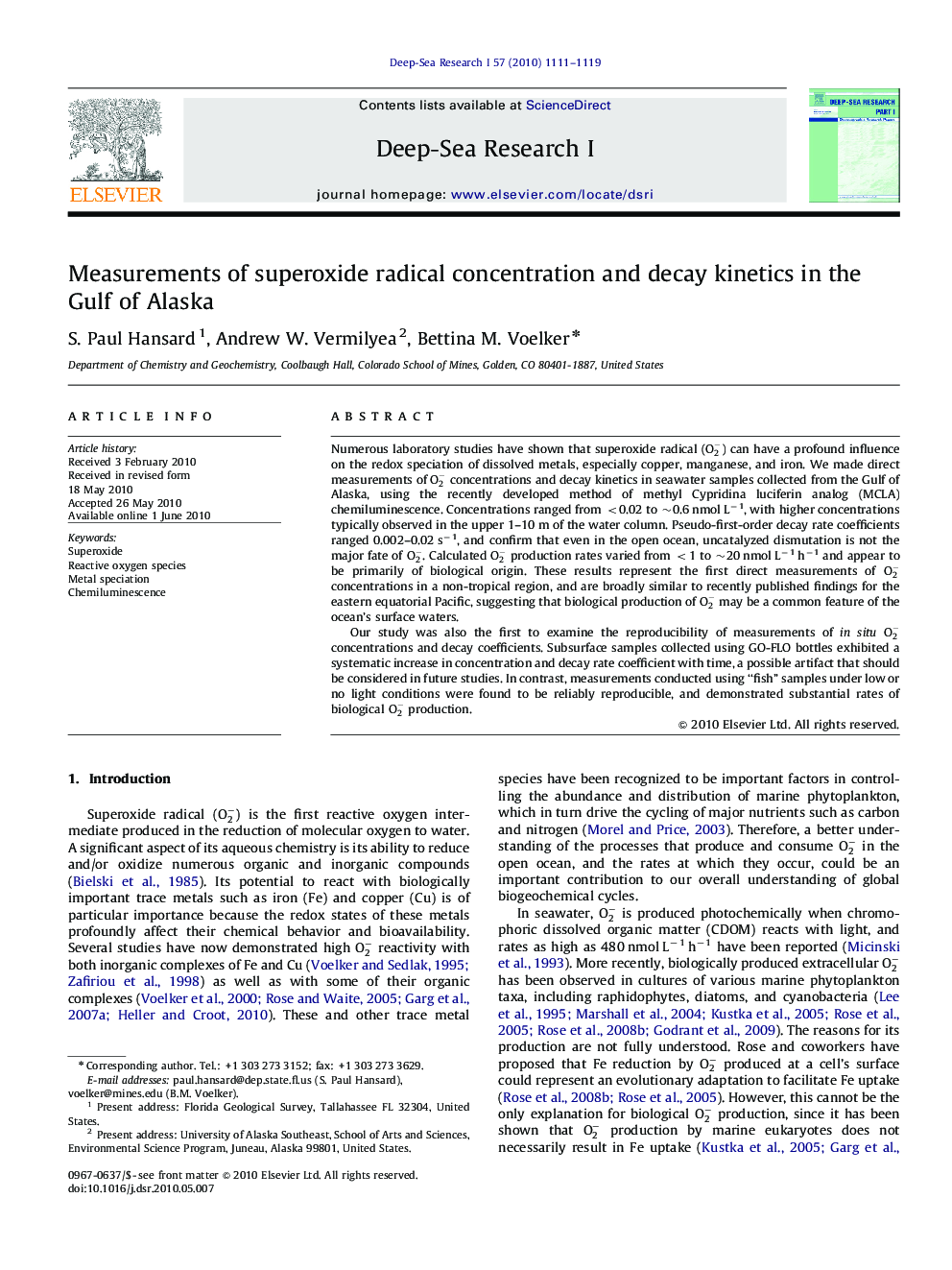| Article ID | Journal | Published Year | Pages | File Type |
|---|---|---|---|---|
| 4535010 | Deep Sea Research Part I: Oceanographic Research Papers | 2010 | 9 Pages |
Numerous laboratory studies have shown that superoxide radical (O2−) can have a profound influence on the redox speciation of dissolved metals, especially copper, manganese, and iron. We made direct measurements of O2− concentrations and decay kinetics in seawater samples collected from the Gulf of Alaska, using the recently developed method of methyl Cypridina luciferin analog (MCLA) chemiluminescence. Concentrations ranged from <0.02 to ∼0.6 nmol L−1, with higher concentrations typically observed in the upper 1–10 m of the water column. Pseudo-first-order decay rate coefficients ranged 0.002–0.02 s−1, and confirm that even in the open ocean, uncatalyzed dismutation is not the major fate of O2−. Calculated O2− production rates varied from <1 to ∼20 nmol L−1 h−1 and appear to be primarily of biological origin. These results represent the first direct measurements of O2− concentrations in a non-tropical region, and are broadly similar to recently published findings for the eastern equatorial Pacific, suggesting that biological production of O2− may be a common feature of the ocean’s surface waters.Our study was also the first to examine the reproducibility of measurements of in situ O2− concentrations and decay coefficients. Subsurface samples collected using GO-FLO bottles exhibited a systematic increase in concentration and decay rate coefficient with time, a possible artifact that should be considered in future studies. In contrast, measurements conducted using “fish” samples under low or no light conditions were found to be reliably reproducible, and demonstrated substantial rates of biological O2− production.
